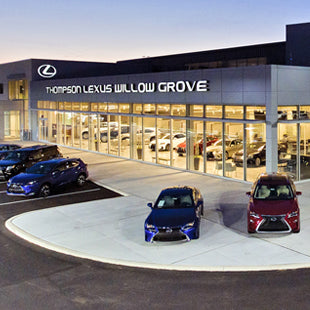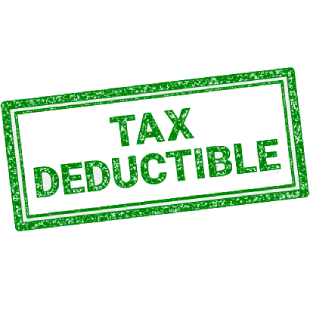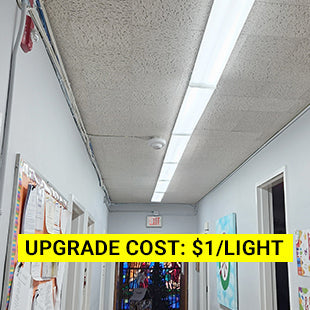URGENT: Time to Upgrade Your Fluorescent Light Fixtures to LED
State Bans Are Taking Effect Now—Don't Wait Until It's Too Late
Critical Update for 2025: Multiple states including California, Colorado, Hawaii, Illinois, Maine, Maryland, Oregon, Rhode Island, Vermont, and Washington have enacted laws banning the sale of fluorescent lamps. California's ban took full effect on January 1, 2025, with other states following through 2026-2027. More than one-fifth of the US is now covered by clean lighting legislation phasing out fluorescent technology due to mercury content and environmental concerns.
With fluorescent supplies disappearing from shelves and regulatory compliance becoming mandatory, now is the critical time to upgrade to LED lighting.
Why the Urgency?
We're often asked, "How do you replace fluorescent tubes with LED?" and "Which LED replacement for fluorescent is best?" But in 2025, these questions have taken on new urgency. Here's why you need to act now:
Regulatory Compliance
Ten states have passed clean lighting legislation, and federal regulations continue to evolve. Businesses in affected states must transition to LED or face compliance issues and supply shortages.
Mercury Safety Concerns
Fluorescent lamps contain toxic mercury that poses significant health risks when bulbs break. With three in four fluorescent bulbs not properly disposed of, the risk to sanitation workers and the environment has driven regulatory action. LED lights contain no mercury, making them safer for your facility and easier to dispose of.
Superior Energy Savings
Modern LED technology now delivers 50-60% energy savings compared to fluorescent tubes—significantly better than earlier generations. LED tubes produce approximately 130 lumens per watt compared to fluorescent's 50-100 lumens per watt, with some reaching as high as 200 lumens per watt.
Extended Lifespan
LED tube lights now offer 50,000+ hours of operation, with premium products reaching up to 100,000 hours, compared to fluorescent's 12,000 to 20,000 hours. This translates to dramatically reduced maintenance costs and fewer replacements over the life of your lighting system.
Financial Incentives Expiring
Many utility companies and government programs offer substantial rebates and incentives for LED upgrades, including the 179D Energy Efficient Commercial Buildings Tax Deduction. However, these programs may have limited funding or expiration dates—especially as states approach their fluorescent phase-out deadlines.
Your Conversion Options: Two Paths Forward
If you have fluorescent fixtures, you'll find there are two main paths:
- Convert your existing fixtures to work with LED replacements
- Replace your fluorescent fixtures with all-new LED fixtures
Within those two paths are several options. Which one you choose depends on the type and location of your fixtures, your lighting goals, your budget, and your state's regulatory timeline.
Whatever solution you ultimately choose, you will reduce energy usage by 50-60%, cut operating costs significantly, eliminate mercury exposure risks, and reduce maintenance time needed—without sacrificing light quality or brightness levels.
Path 1: Converting Fluorescent Fixtures to LED
Option 1: Replace 4ft fluorescent tubes with LED 4ft tube lights
What you need to know:
-
Installation options:
- Ballast bypass/Type B tubes require minor re-wiring of the fixture, redirecting power from the ballast to the tombstone sockets. Since the ballast accounts for as much as 10% of your fixture's energy draw, your fixture will be even more energy efficient when you're done. LED retrofit tubes can have payback periods as short as four months.
- Ballast compatible/Type A tubes work only with certain types of ballasts and may need replacement when ballasts fail
- Hybrid/Type AB tubes offer the lowest upfront cost when an existing ballast is still usable
- Brightness options: Choose between a low-cost like-for-like LED fluorescent replacement tube to get the same light output at lower energy cost, or an ultra-high lumen LED fluorescent replacement tube for additional brightness at even more efficient operation—or find your sweet spot somewhere in the middle
Compliance note: With state bans in effect, ensure you purchase compliant LED tubes that meet all current energy efficiency standards.
Shop Compliant 4ft LED tube lights
Option 2: Replace your fluorescent tubes with magnetic LED linear strip kits
What you need to know:
- Simplified installation: Less re-wiring involved than with tubes—instead of wiring the mains to each individual tombstone socket, you wire the mains to one LED driver
- Easy mounting: Magnetic LED light strips and driver easily adhere to metal fixtures, freeing up both hands for an easier installation
- Ballast bypass advantage: You don't have to pay for the energy used by the fixture's fluorescent ballast, and you eliminate the mercury hazard associated with fluorescent technology
- Superior heat management: The external LED driver allows for better airflow and heat dissipation than LED tubes' internal drivers, which translates to longer life (50,000+ hours) and increased reliability
Shop magnetic LED light strips
Option 3: Retrofit your troffer with an easy-install troffer retrofit kit
What you need to know:
- Mid-range investment: More affordable than complete fixture replacement, more substantial than tube-only replacement
- Faster installation: Quicker than removing and replacing entire fixtures, reducing labor costs and facility disruption
- Improved light distribution: Retrofit kits typically include new LED panels or arrays that provide more uniform, high-quality illumination compared to fluorescent tubes
- Complete modernization: Eliminates old ballasts, fluorescent tubes, and outdated reflectors in one upgrade
- Professional appearance: Updates the visible components of your ceiling lighting while maintaining the existing troffer footprint
- Smart-ready options: Many retrofit kits can accommodate occupancy sensors, dimming controls, and building automation integration
Path 2: Replace Your Fluorescent Fixture with an LED Fixture
Option 1: Replace your fixtures with LED panel lights or troffers
What you need to know:
- Contemporary design: Retain the troffer footprint while upgrading to a sleek, modern look that signals your commitment to sustainable practices
- Versatile installation: Ideal for replacing fixtures in suspended grid ceilings; some models can also be surface-mounted to flat ceilings
- Superior light quality: Provides evenly dispersed lighting without the visible dim spots that sometimes show with both fluorescent and LED tubes
- Smart-ready options: Many modern LED panels can integrate with building automation systems for occupancy sensing, daylight harvesting, and scheduling
Shop LED Panel Lights & Troffers
Option 2: Replace your fluorescent strip light with an LED fixture
What you need to know:
- Sleek all-in-one design: Slimmer and lighter-weight profile than traditional fixtures
- Compact options: Some all-in-one fixtures, like our Integrated Tube Lights, aren't much larger than a fluorescent tube
- Installation flexibility: Can be surface mounted or suspended from wires
- Enhanced output: Often provides more light output than fixtures with tubes while using 50-60% less energy
NEW: Smart Lighting Controls Integration
The Next Generation of LED Efficiency
As the LED lighting market continues to evolve in 2025, smart lighting controls have emerged as a critical component for maximizing energy savings and improving user experience. Network lighting controls (NLCs) are gaining significant traction in commercial, educational, and municipal settings.
Benefits of smart LED controls:
- Enhanced energy savings: Systems adjust lighting based on occupancy, daylight levels, and usage patterns, delivering additional savings beyond the LED conversion itself
- Centralized management: Intuitive dashboards allow you to manage lighting across large facilities from a single interface
- IoT integration: Seamless communication with other smart building devices for optimized performance
- Tunable white lighting: Adjust color temperature throughout the day to improve focus during work hours and support natural circadian rhythms
- Occupancy sensing: Lights automatically turn off in unoccupied spaces, eliminating wasted energy
- Daylight harvesting: Automatically dim lights near windows when natural light is sufficient
- Scheduling capabilities: Program lights to match your facility's operating schedule
Applications gaining popularity:
- Educational facilities using tunable lighting to create effective learning environments
- Office buildings with occupancy-based controls for conference rooms and private offices
- Warehouses and industrial facilities with high-bay LED fixtures and motion sensors
- Retail spaces with scene-setting capabilities for different times of day or promotional events
Contact our team to learn how smart lighting controls can be integrated into your LED retrofit project for maximum savings and functionality.
Calculate Your Return on Investment
Understanding your ROI is crucial for making confident upgrade decisions. Here's what you need to know:
Payback periods for LED conversions:
- LED retrofit tubes or kits: 18 months to 3 years
- Complete fixture replacements: typically 2-5 years depending on operating hours and utility rates
- Upgrades with smart controls: 2-4 years
Energy efficiency rebates signicantly reduce the payback periods, and all of the above options provide ongoing operational savings afrter payback.
Factors that strengthen your ROI:
- Energy savings: 50-60% reduction in lighting energy consumption
- Maintenance reduction: 50,000+ hour lifespan vs. 12,000 to 20,000 hours for fluorescent means far fewer replacements
- Labor cost savings: Fewer bulb changes and service calls significantly reduce maintenance expenses
- Utility rebates: Can offset 20-50% of upfront costs in many regions
- Energy efficiency incentives: Rebates and other incentives from utility providers reduce net investment
- Tax incentives: 179D deductions and other programs also reduce net investment
- Avoiding compliance penalties: Proactive upgrades prevent supply chain issues and regulatory fines
Energy cost example: The average household saves about $225 annually by switching to LED lighting. But for commercial facilities with hundreds or thousands of fixtures, annual savings commonly reach $10,000-$100,000+ depending on facility size and operating hours.
With the global LED Tube Light Market projected to grow at an 11.83% CAGR between 2025 and 2033, LED technology continues to improve while costs decline, making now an ideal time to upgrade.
Sustainability and Environmental Impact
Beyond compliance and cost savings, upgrading to LED delivers substantial environmental benefits:
Mercury elimination: Fluorescent lamps contain toxic mercury that poses risks to human health and the environment. LED lighting contains no hazardous materials, making it safer for installation, operation, and disposal.
Carbon footprint reduction: The ten states with clean lighting legislation will collectively avoid the release of 14.5 million metric tons of carbon dioxide—equivalent to removing 3.4 million gasoline-powered vehicles from the road for a year.
Energy consumption: LED lights use up to 75% less energy than incandescent bulbs and 50-60% less than fluorescent tubes. By 2035, widespread LED adoption is anticipated to save 569 TWh annually in the United States—equal to the annual energy output of more than 92 large power plants.
Recyclable and sustainable: Manufacturers are increasingly shifting toward eco-friendly materials and designs that allow for easier recycling of LED components. LED products are fully recyclable and made from non-toxic, safe materials.
Reduced waste: With lifespans exceeding 50,000 hours, LED bulbs last up to 25 times longer than traditional lighting, dramatically reducing the volume of bulbs ending up in landfills.
Get the Most Out of Your Lighting Retrofit
Free Project Management Services
If you're upgrading a commercial property, consider taking advantage of our free Lighting Retrofit Project Management services.
These services include:
- Comprehensive lighting performance analysis
- Full retrofit plan tailored to your facility and timeline
- High-quality replacement lights that meet all current regulations
- Complete project management and installation oversight
- Rebate and incentive application assistance – we handle the legwork to find and apply for all financial incentives your upgrade qualifies for, saving you even more money in upfront costs
Act now: With state fluorescent bans in effect and more states considering similar legislation in 2025, supply chains for traditional fluorescent products are already experiencing shortages. Early planning ensures you have access to the LED products you need at competitive prices.
Understanding LED Brightness
Keep in mind that although the lumen output may seem lower for LED tubes than fluorescents, there are several reasons why you'll experience LED lights as being as bright as, if not brighter than, fluorescents (something we've covered in more detail in this blog post).
Why LED brightness exceeds expectations:
- Directional light: LEDs emit light in specific directions, reducing wasted light trapped in fixtures
- Better color rendering: Modern LEDs typically offer CRI ratings of 80-90+, making colors appear more vibrant and accurate
- No degradation: LED light output remains consistent throughout the bulb's life, while fluorescent output degrades significantly over time
- Cooler operation: LEDs produce very little heat compared to fluorescent lamps (which release about 80% of their energy as heat), meaning more energy goes into producing light
With today's technology, you can rest assured that if you're buying an LED tube from a reputable manufacturer, it will be at least as bright as the fluorescent you're replacing. The lumen rating for various LED tubes is best used to compare one LED option against another—the higher the number, the greater the light output.
Take Action Now: Your Next Steps
1. Assess your current fixtures: Document what types of fluorescent fixtures you have and their locations
2. Check your state's regulations: Verify compliance deadlines in your state to ensure you're not caught off-guard
3. Request a lighting audit: The lighting experts at ELEDLights can evaluate your facility and recommend the optimal LED solution at no cost to you
4. Explore rebate opportunities: Many utility programs have limited funding—apply early to maximize savings
5. Plan your timeline: Coordinate installations to minimize disruption to your operations
Questions? We're Here to Help
Our expert team is available to assist with your conversion from fluorescent to LED:
West Coast Facility: 858.650.9400
East Coast Facility: 215.355.7200
Email: sales@eledlights.com
Looking for a Lighting Supplier You Can Count On?
Top 3 Reasons to Choose ELEDLights:
1. Regulatory Expertise: We stay current on all state and federal lighting regulations to ensure your upgrades meet compliance requirements
2. Complete Solutions: From simple tube replacements to complex smart lighting retrofits, we offer products and services for every application
3. Proven Results: Our customers collectively save millions annually on energy costs while improving light quality and reducing maintenance
Contact us today to start your fluorescent-to-LED conversion and join the thousands of businesses already benefiting from modern, efficient, mercury-free LED lighting technology.
Last Updated: October 2025 | All efficiency data and regulatory information current as of publication date





